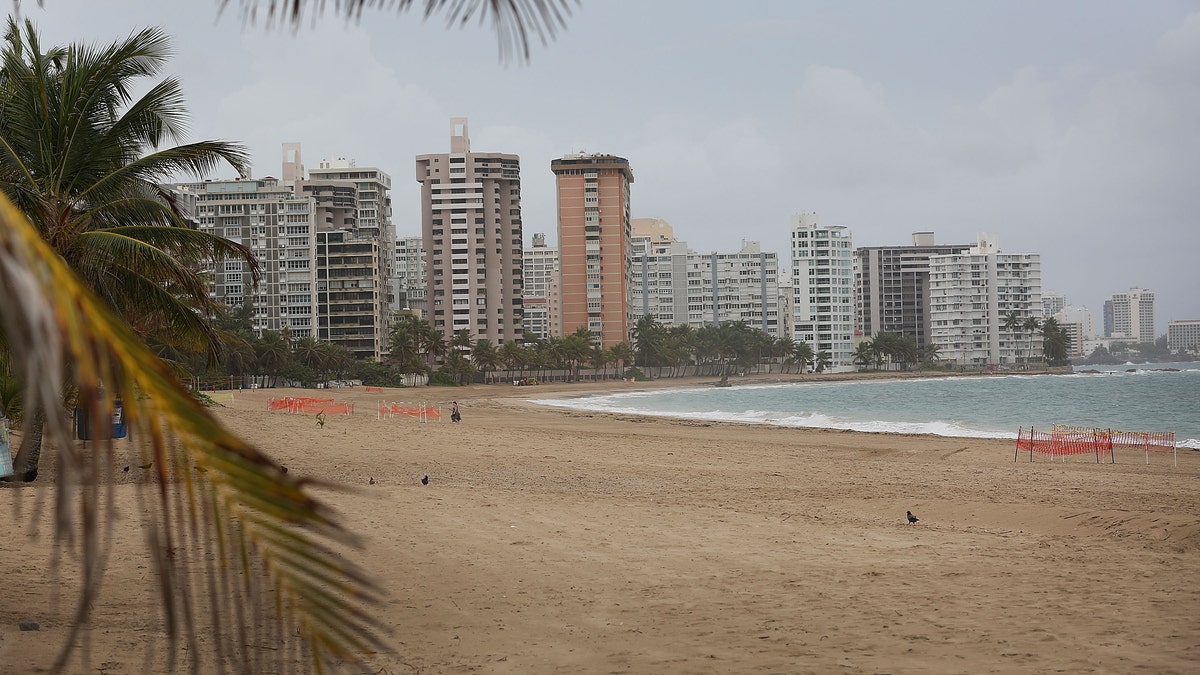
SAN JUAN, PUERTO RICO - JULY 01: The beach is empty on July 1, 2015 in San Juan, Puerto Rico. The island's residents are dealing with increasing economic hardships and a financial crisis that has resulted in the government's $72 billion debt. Governor Alejandro Garcia Padilla said in a speech recently that the people will have to sacrifice and share in the responsibilities for pulling the island out of debt. Consumer tax on certain items has risen to 11.5 percent. (Photo by Joe Raedle/Getty Images) (2015 Getty Images)
The United States Senate held a hearing last week to help determine what, if any, role the U.S. government should play in helping the territory of Puerto Rico to resolve its financial mess. As the immediate past Governor of Puerto Rico, I have some perspective on the root of the island’s current problems, and what Congress and the White House should do to help.
Surely, Puerto Rico faces real challenges. On the one hand, these challenges are a result of a territorial status that no longer serves the 3.7 million U.S. citizens of the island well. The island’s residents rejected the present territorial status in a referendum on November 2012 and Washington ought to address their claims for a change in status. On the other hand, many of these problems are self-inflicted, and are the direct result of an out-of-control fiscal management process by the current government, that has destroyed the island’s credibility and allowed its bonds to be downgraded to junk status.
Fixing Puerto Rico won’t be easy; it will require real reductions in spending. During my term as Governor, we faced many challenges of our own, but we made sound fiscal management a priority. The same thing needs to be done now.
I must admit, it has been tough to watch the last 34 months, especially considering that not long ago, Puerto Rico was touted as an economic success story, and a model for other state governments. After being elected in 2008 as Puerto Rico’s Governor, my team and I cut spending and reduced the size of government by 20%. We cut a $3.3 billion budget deficit by more than two thirds. And as a result of our fiscal policies, our bond rating improved, our borrowing costs went down, we were able to attract foreign investment, and we created jobs.
By contrast, Puerto Rico's current administration has increased spending during the last three years and roiled markets by recently announcing that the island’s debts are not payable. Indeed, the island's government has already defaulted on a $93 million payment to Puerto Rico’s Public Finance Corporation (PFC) bondholders. In defaulting, the administration claimed that not paying bondholders is in the best interest of Puerto Ricans. But when it defaulted on PFC bondholders last month, Puerto Rico’s government defaulted on middle class Puerto Ricans, who hold the majority of these bonds.
What’s more, the administration has even flip-flopped on the matter of honoring Puerto Rico’s own Constitutional debt – the debt backed by our full faith and credit. Their most recent statements and Fiscal Adjustment Plan calls for the restructuring of all bondholders, even those holding bonds backed by the island’s Constitution. Defaulting on Constitutional debt would be a disaster and, contrary to the administration's claims, would shatter Puerto Rico’s reputation with investors for a generation.
Non-payment of debt is not Puerto Rico’s only option. Puerto Rico has options, and it should start by living within its budget and cutting spending. For example, this year, Puerto Rico’s government budgeted $2 million for advertising on television and radio; it has already spent more than $56 million on advertising that is mostly intended to burnish the government’s image.
Here’s another example: the territory's government likes to position the issue of the debt as a choice between paying bondholders or having enough money for education. But this is political manipulation that isn’t based on the facts. In the past three years, the number of students in Puerto Rico has declined by 45,000, while the number of teachers has gone up by 5,000. The current student/teacher average in Puerto Rico is 11/1. The national average is 16/1. Simply matching the national average would save $200 million annually.
For its part, Congress can help Puerto Rico by linking any assistance with meaningful fiscal reform that reduces spending. Here are three things that Congress could do to help Puerto Rico:
First, it can impose fiscal oversight that forces reduction in spending. One idea that has been discussed is the creation of a federal control board, similar to the control board that was successfully used to fix Washington, D.C. in the 1990s. Combining fiscal controls with any additional federal assistance would help to assure that Puerto Rico fixes its structural problems, which is essential to fixing Puerto Rico. Debt relief alone isn’t the answer.
Second, Congress could consider granting Puerto Rico the same rights that other states have by amending its bankruptcy code prospectively to allow for orderly restructuring of future municipality and public corporation debt. This action would not and should not touch the Constitutional debt, because doing so would set a bad precedent for other states to default on their full faith and credit debt. Changing the rule of law retroactively could negatively impact ongoing consensual negotiations and reward Puerto Rico for its fiscal mismanagement.
Third, Congress could remove caps on Medicaid funding, and increase rates for Medicare reimbursement, which would provide immediate relief to the island residents.
Fixing Puerto Rico won’t be easy; it will require real reductions in spending. During my term as Governor, we faced many challenges of our own, but we made sound fiscal management a priority. The same thing needs to be done now.




















